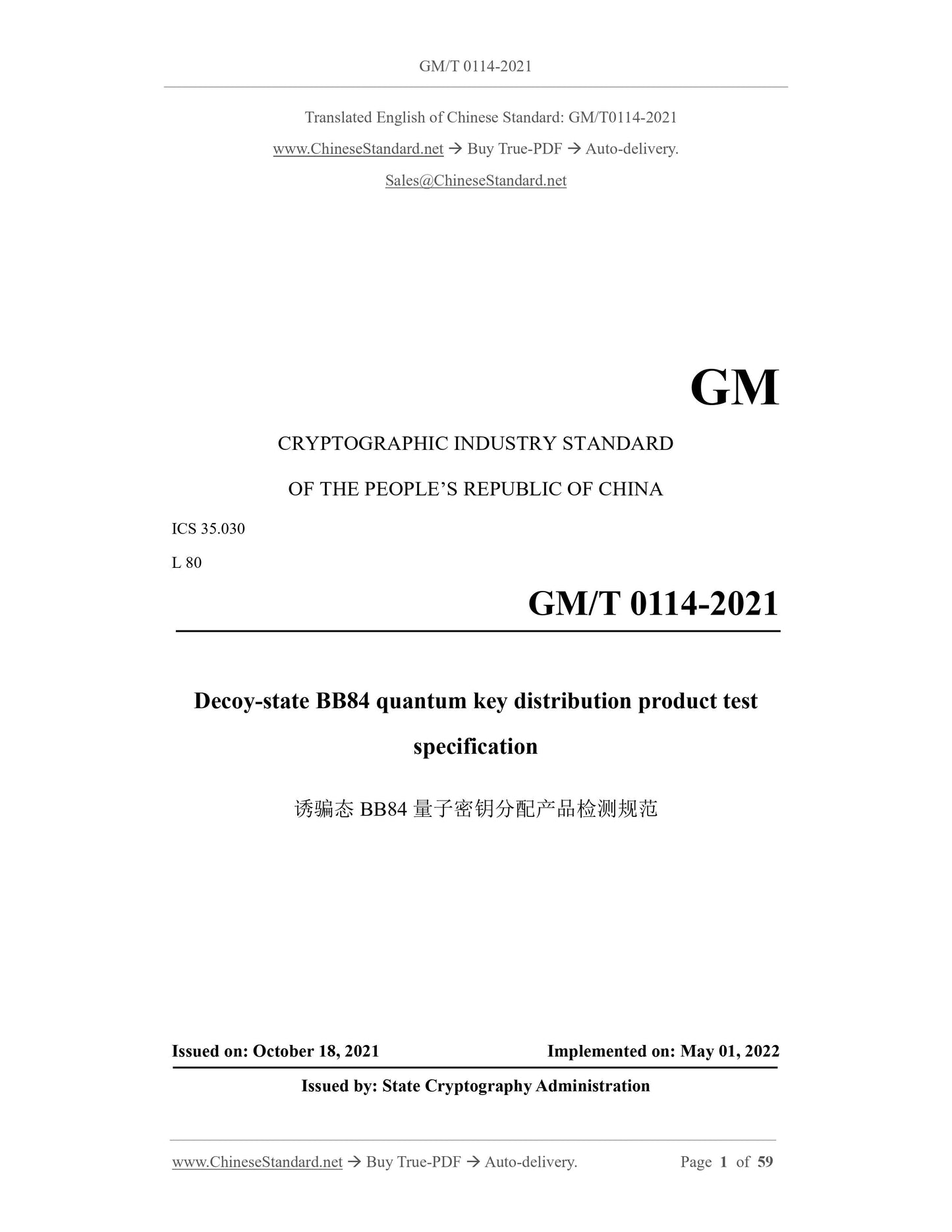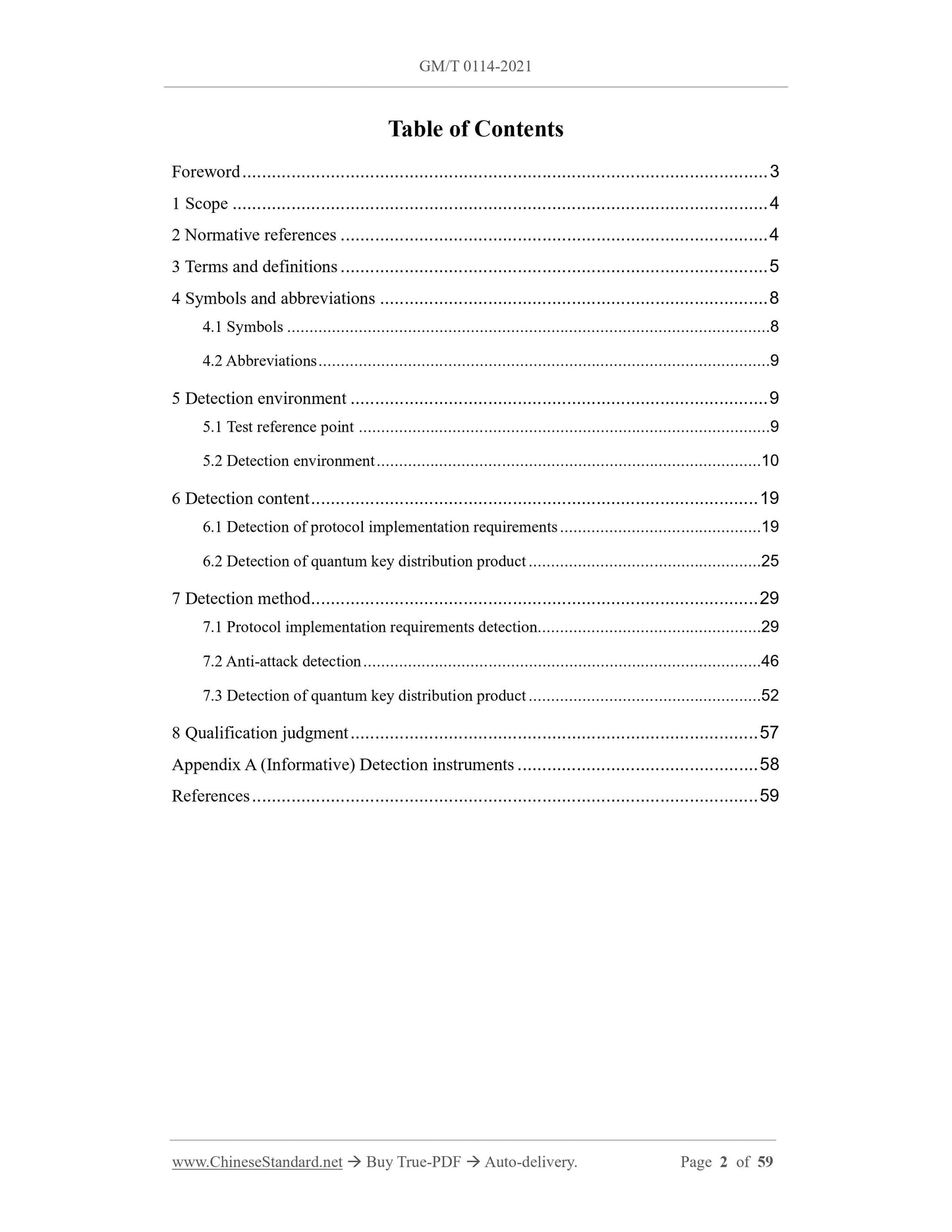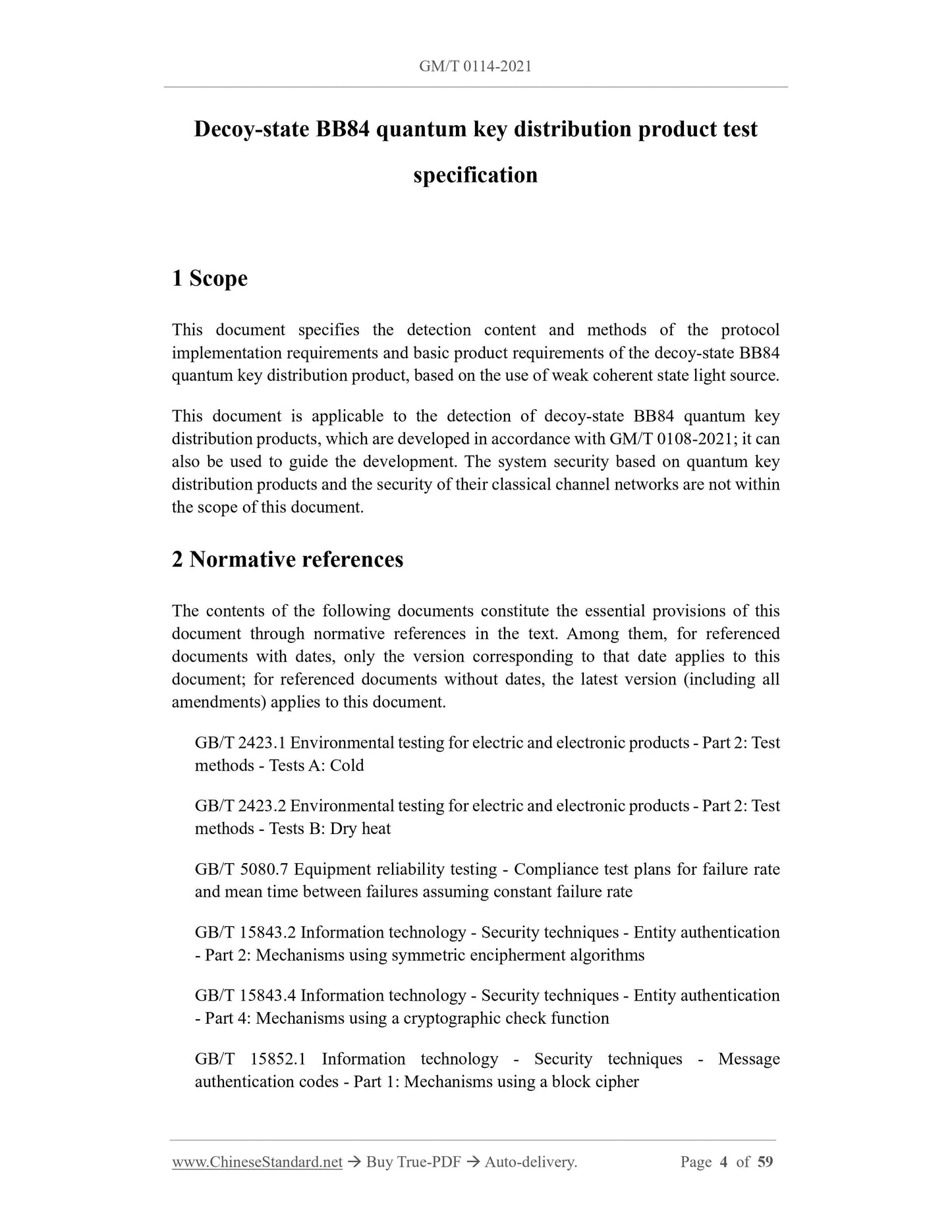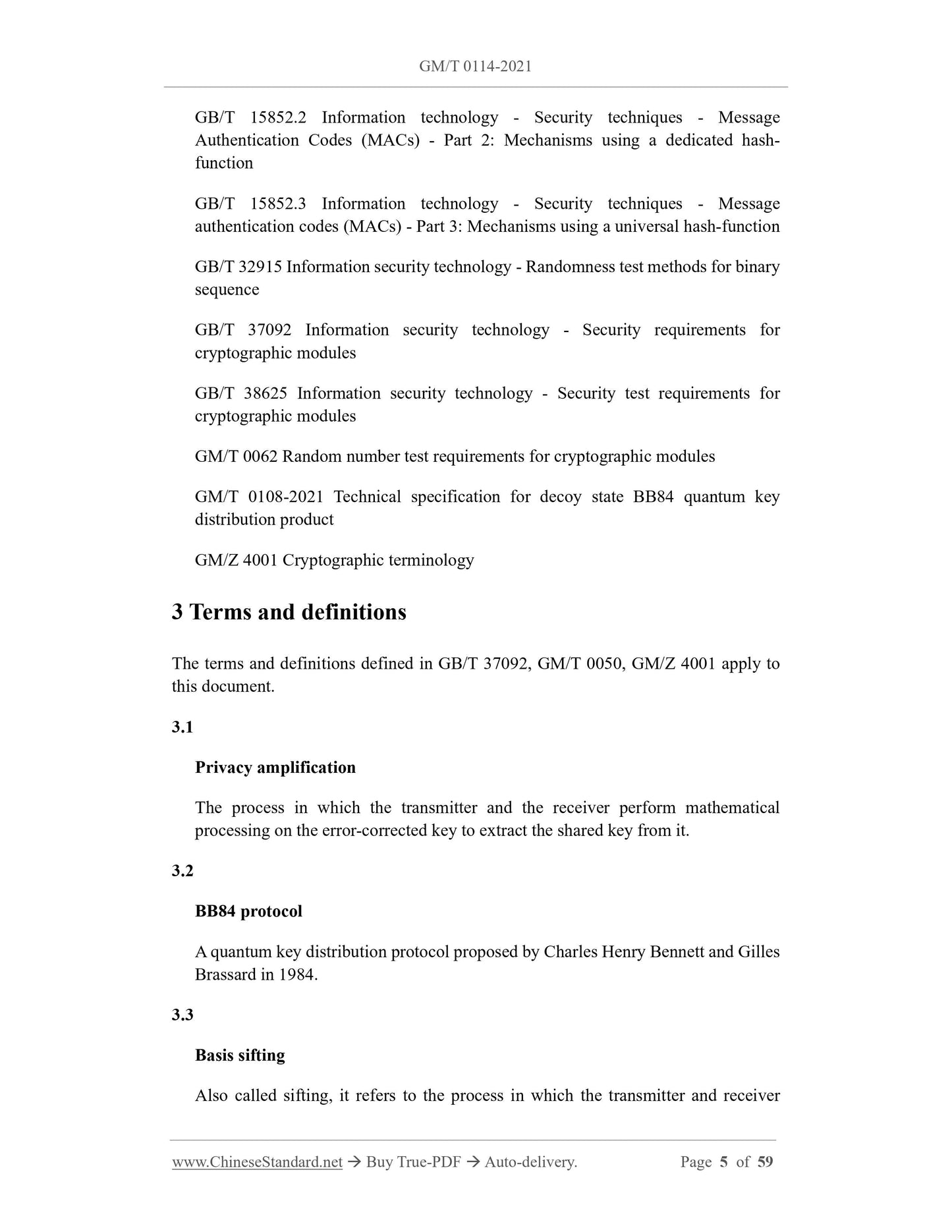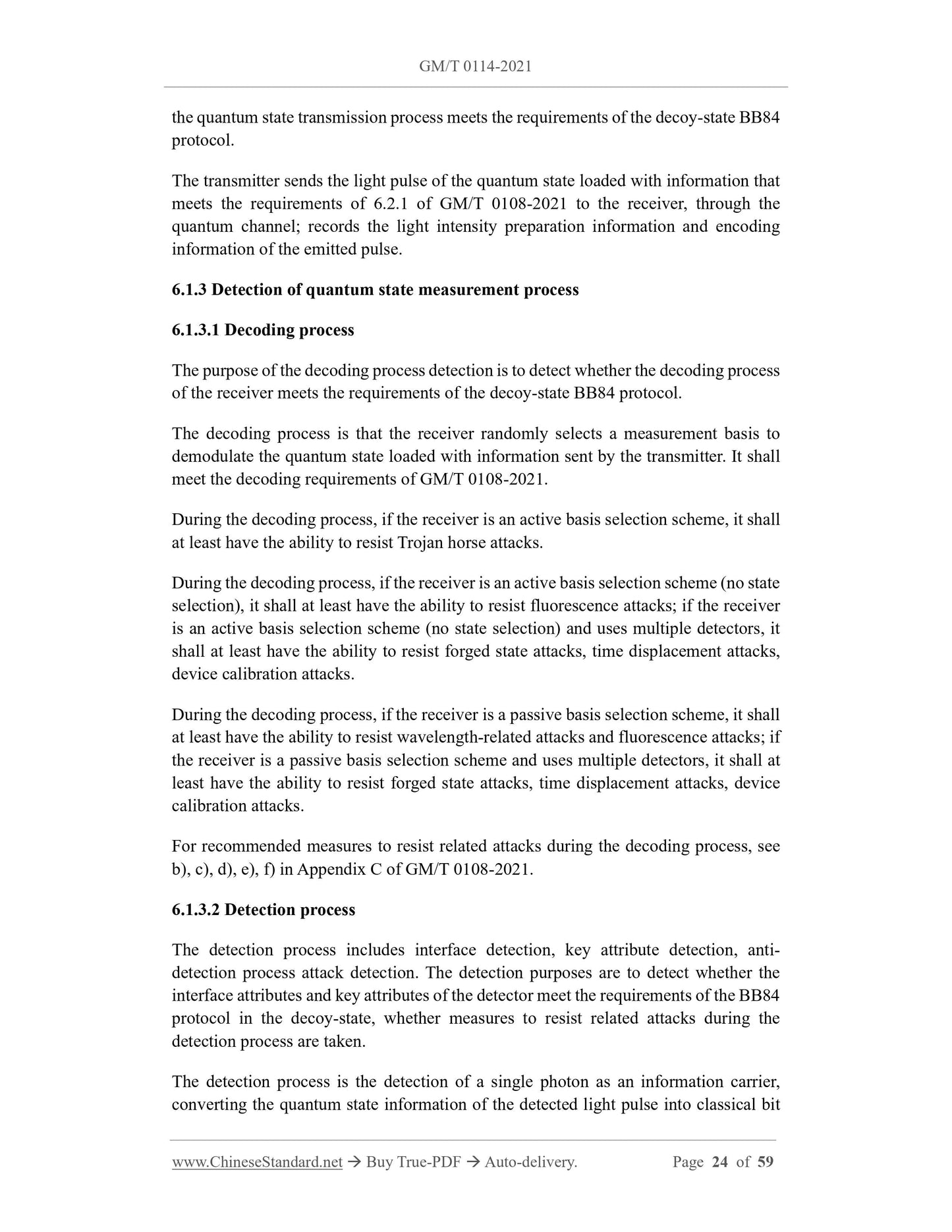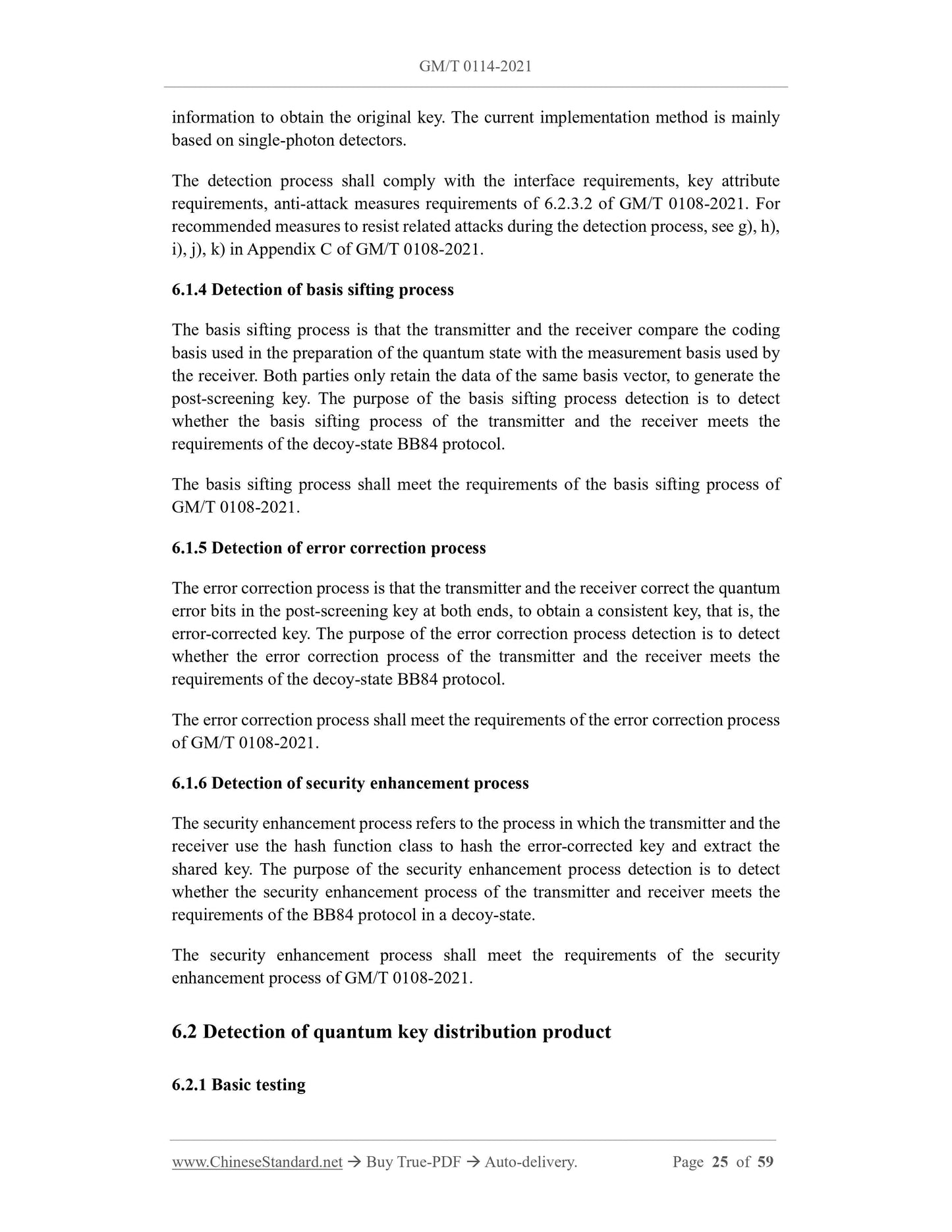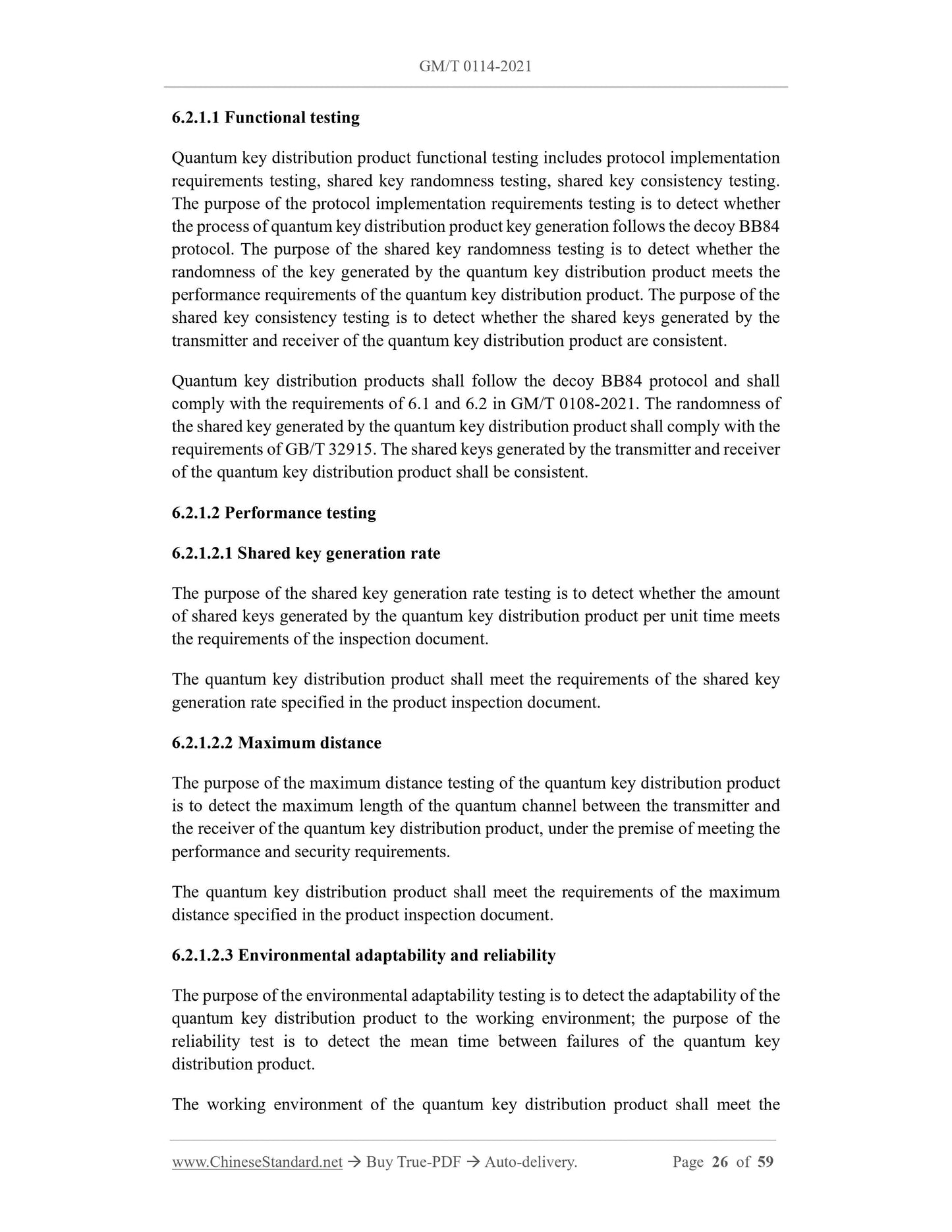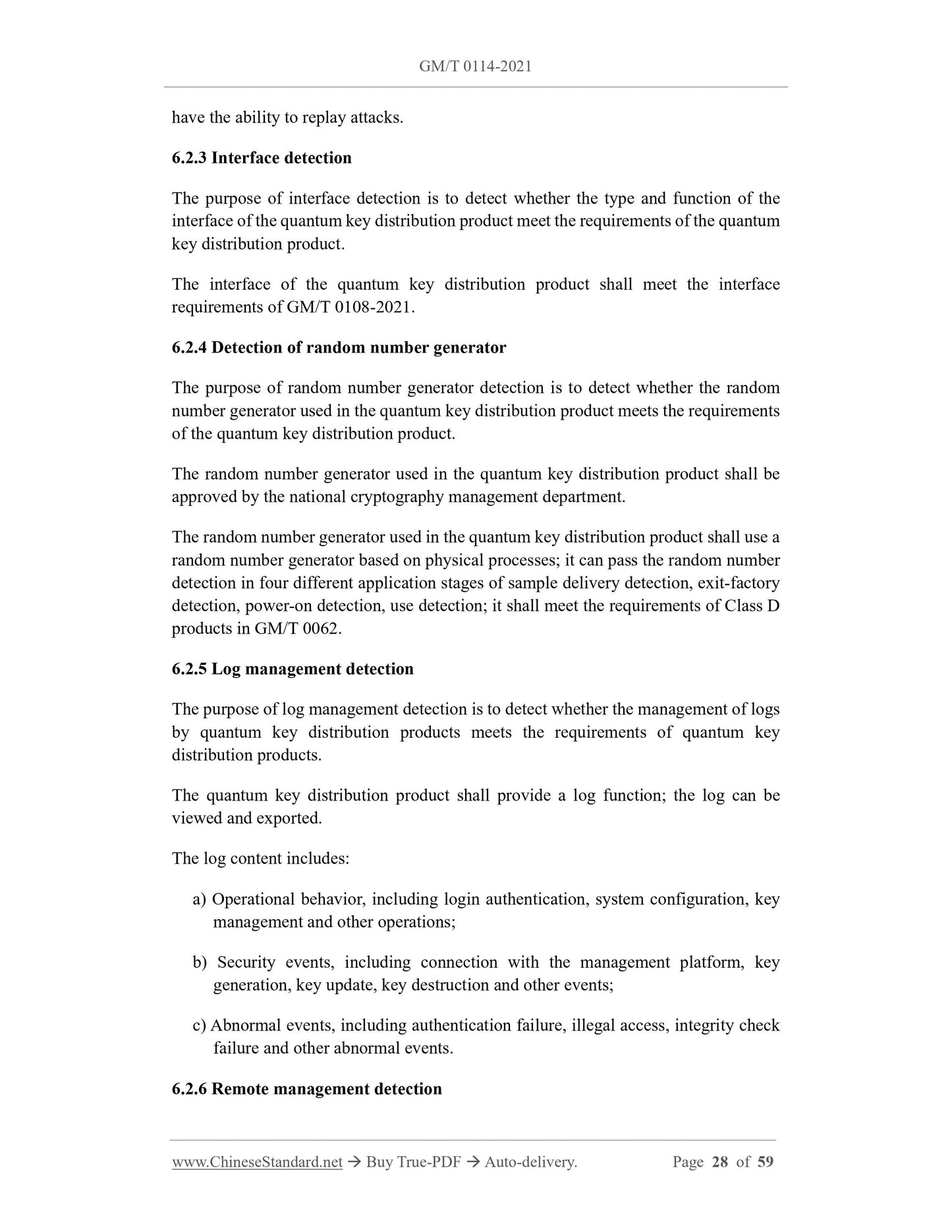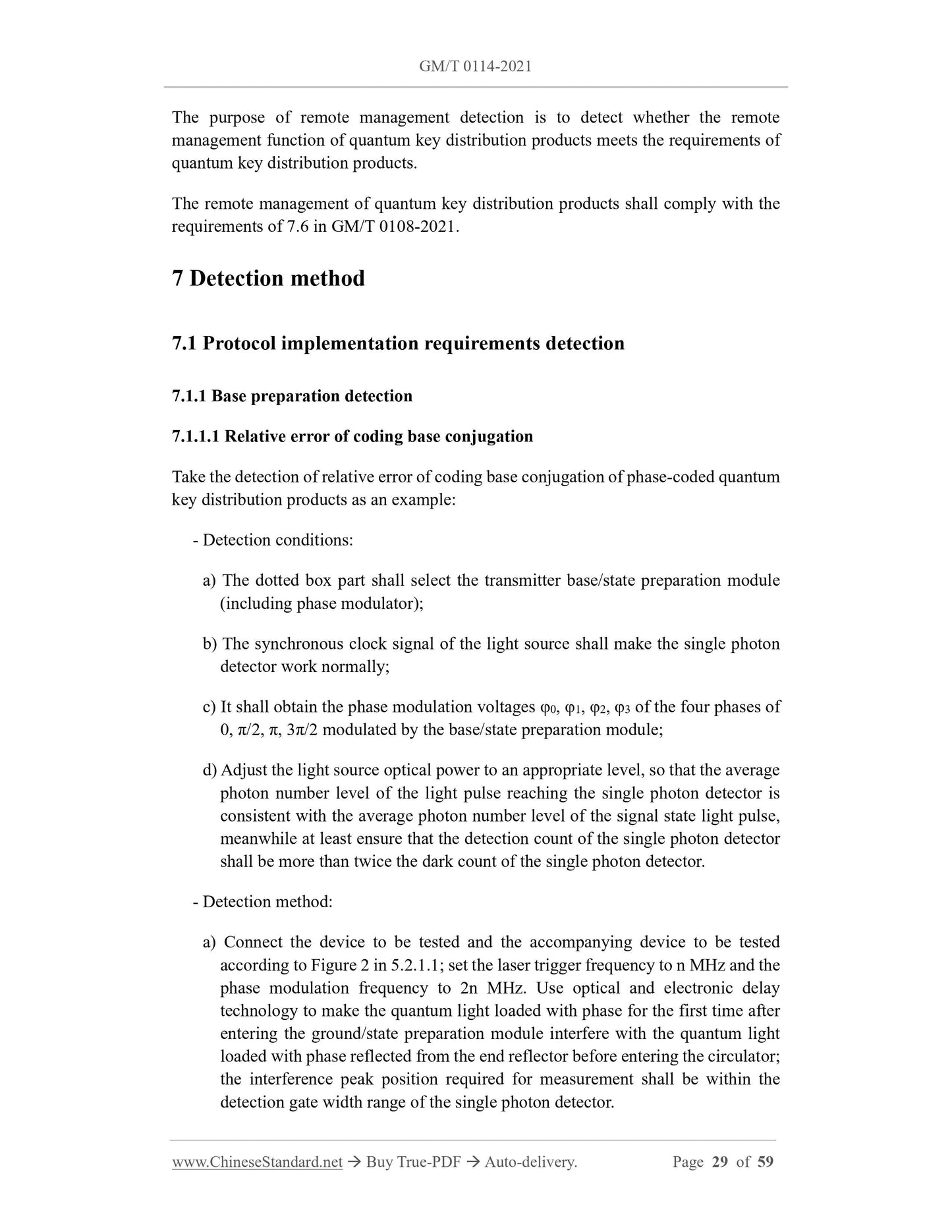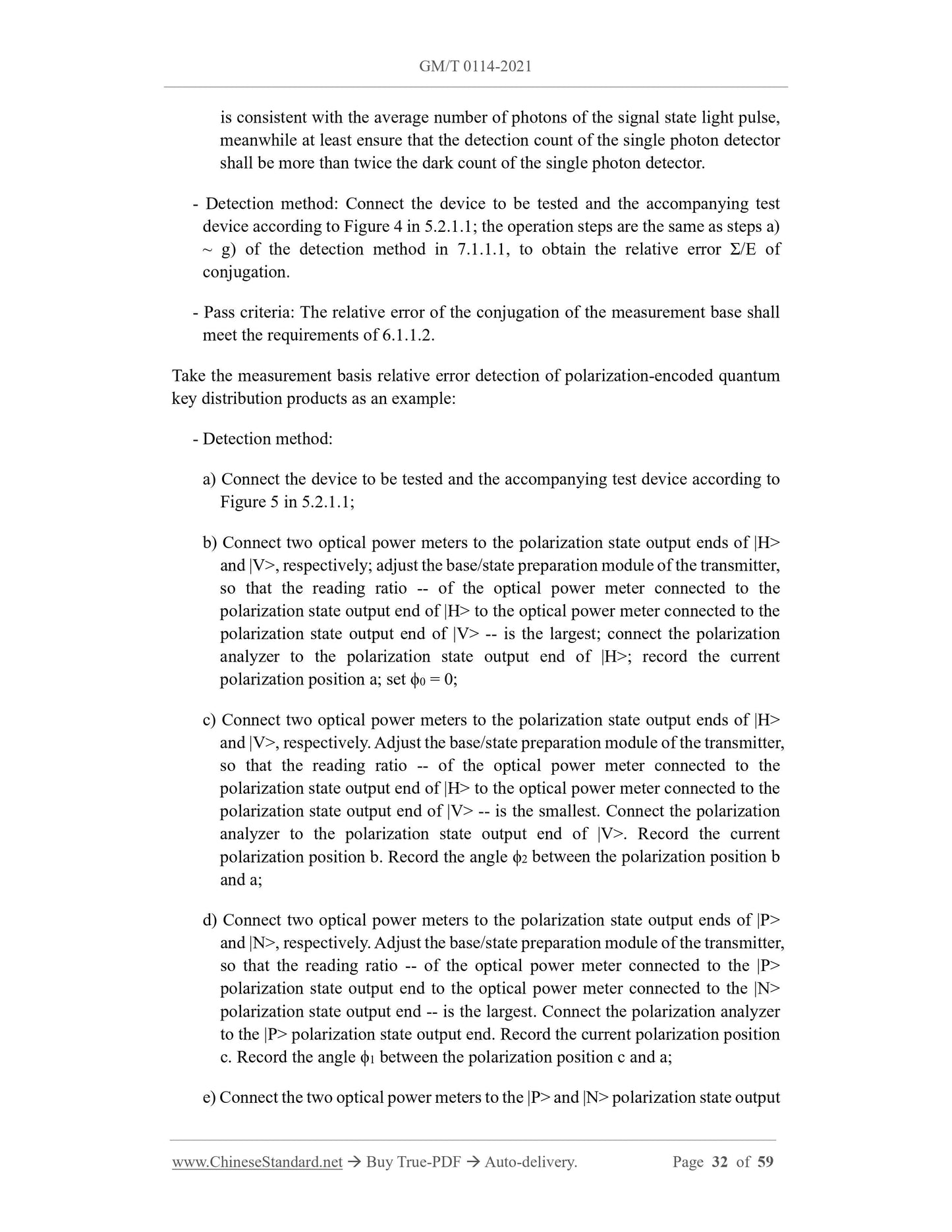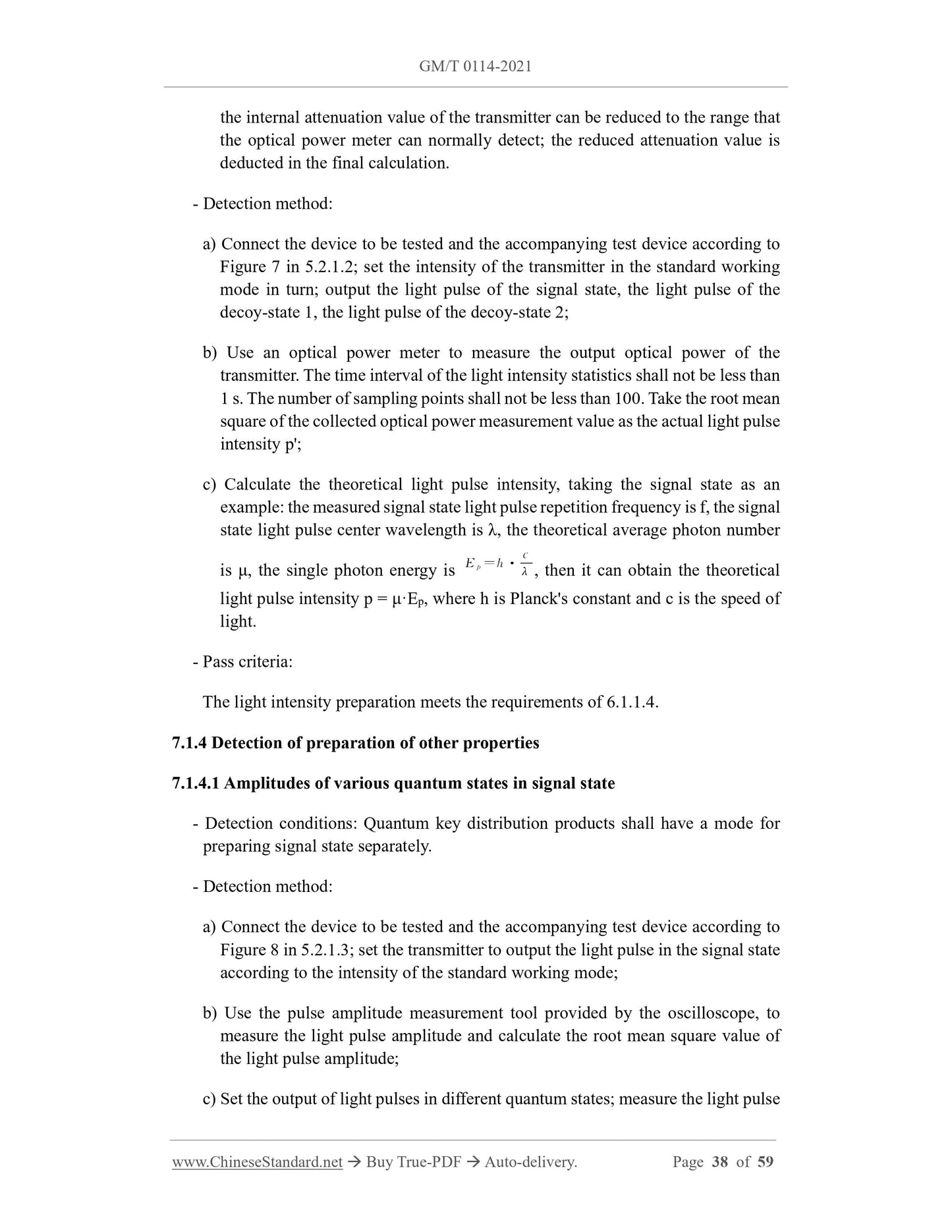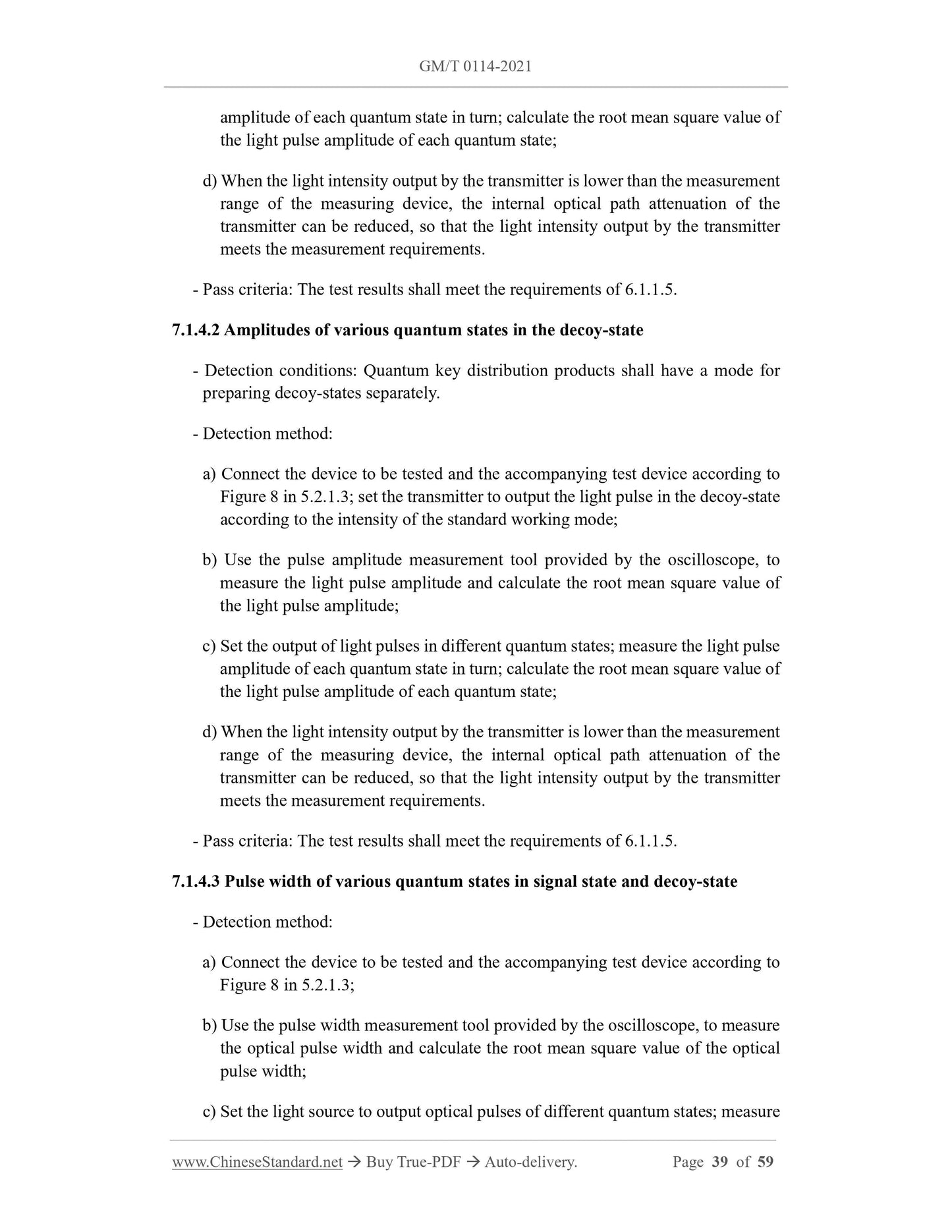1
/
of
12
www.ChineseStandard.us -- Field Test Asia Pte. Ltd.
GM/T 0114-2021 English PDF (GM/T0114-2021)
GM/T 0114-2021 English PDF (GM/T0114-2021)
Regular price
$590.00
Regular price
Sale price
$590.00
Unit price
/
per
Shipping calculated at checkout.
Couldn't load pickup availability
GM/T 0114-2021: Decoy-state BB84 quantum key distribution product test specification
Delivery: 9 seconds. Download (and Email) true-PDF + Invoice.Get Quotation: Click GM/T 0114-2021 (Self-service in 1-minute)
Newer / historical versions: GM/T 0114-2021
Preview True-PDF
Scope
This document specifies the detection content and methods of the protocolimplementation requirements and basic product requirements of the decoy-state BB84
quantum key distribution product, based on the use of weak coherent state light source.
This document is applicable to the detection of decoy-state BB84 quantum key
distribution products, which are developed in accordance with GM/T 0108-2021; it can
also be used to guide the development. The system security based on quantum key
distribution products and the security of their classical channel networks are not within
the scope of this document.
Basic Data
| Standard ID | GM/T 0114-2021 (GM/T0114-2021) |
| Description (Translated English) | Decoy-state BB84 quantum key distribution product test specification |
| Sector / Industry | Chinese Industry Standard (Recommended) |
| Classification of Chinese Standard | L80 |
| Word Count Estimation | 39,344 |
| Date of Issue | 2021-10-18 |
| Date of Implementation | 2022-05-01 |
| Issuing agency(ies) | State Administration of Cryptography |
Share
